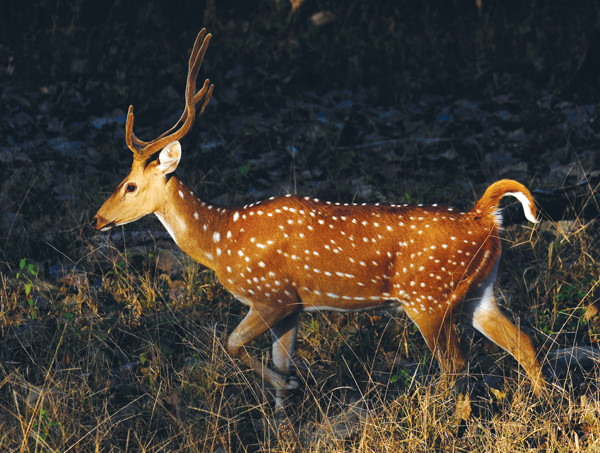
by Timothy Oleson Friday, August 8, 2014

The spotted deer, or chital (Axis axis), has inhabited parts of India for most of the last 200,000 years. Credit: ©Yathin S. Krishnappa, CC BY-SA 3.0.
India is home to some hardy mammals, according to a new study in Proceedings of the National Academy of Sciences. Researchers reported that 20 of 21 mammalian taxa identified from fossils found in southern India have survived on the subcontinent over at least the last 100,000 years, with some lineages stretching back twice that long.
An international team of scientists led by Michael Petraglia of the University of Oxford in England studied sediments from the Billasurgam cave complex in the Indian state of Andhra Pradesh, piecing together the oldest dated fossil-bearing sedimentary sequence from the region. The researchers found evidence of many species and genera that still roam the country today, if not near the cave complex itself then elsewhere in India. These taxa — including species of bears, leopards and antelopes, among others — have survived through multiple glacial-interglacial cycles, the Toba volcanic super-eruption on nearby Sumatra roughly 74,000 years ago and the arrival of modern humans, the team noted.
Whereas similar patterns of long-lived survival among mammals have been reported in Africa and Southeast and Southwest Asia, many mammalian taxa went extinct prior to the Holocene in Europe, Australia and the Americas. Petraglia and his colleagues suggested that the success of mammals in India from late in the Middle Pleistocene to today likely resulted from the presence of long-term “interconnected mosaic habitats” featuring similar topographic and environmental conditions. These habitats allowed animals to escape from one area to another as needed to avoid predation or otherwise unfavorable circumstances.
© 2008-2021. All rights reserved. Any copying, redistribution or retransmission of any of the contents of this service without the expressed written permission of the American Geosciences Institute is expressly prohibited. Click here for all copyright requests.